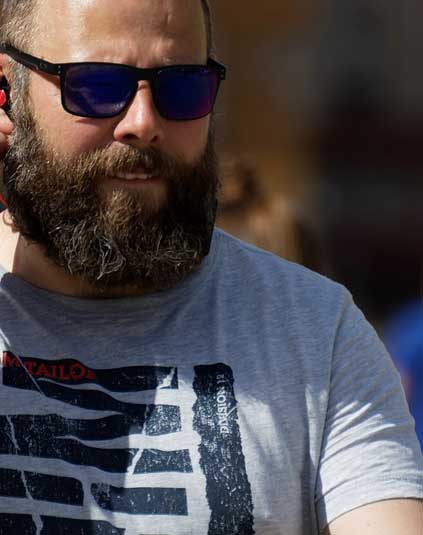
For many men, facial hair isn’t just a trend; it’s a statement of style and confidence. Yet, not everyone is blessed with a full, luscious beard from birth. Genetics, hormonal imbalances, or even scars can leave some individuals with patchy or thin areas that detract from the desired beard aesthetic. Enter the beard transplant—a procedure gaining popularity among those looking to enhance their facial hair. But can it really fill in those patchy or thin spots effectively? Let’s delve into the details.
Understanding Beard Transplants
Beard transplants are a type of hair transplantation procedure where hair follicles are taken from donor areas (typically the back or sides of the scalp) and implanted into the beard area. This technique is similar to the more commonly known hair transplants used for scalp hair restoration. The goal is to create a fuller, more evenly distributed beard.
Who Is a Candidate?
The ideal candidate for a beard transplant is someone experiencing patchiness, thinning, or complete absence of facial hair due to genetics, injury, or surgery. Good candidates also have adequate donor hair on the scalp for harvesting. During a consultation, a qualified surgeon assesses these factors to determine if the procedure is suitable.
The Procedure
- Consultation and Planning: A thorough consultation precedes the transplant. The surgeon discusses goals, examines the beard area, and evaluates the donor site.
- Harvesting: Hair follicles are harvested from the donor area, usually the scalp, where hair is more robust and resistant to balding. Advanced techniques like Follicular Unit Extraction (FUE) are commonly used, which involves extracting individual follicles for precise placement.
- Implantation: The extracted follicles are meticulously implanted into the beard area at the correct angle and density to mimic natural growth patterns. This requires both skill and artistry to ensure the results look natural.
Recovery and Results
Post-procedure, patients may experience minor swelling, redness, or discomfort, which typically subsides within a few days. The transplanted hairs shed within a few weeks, but new growth begins within a few months. Significant results usually appear around 6-12 months, with full results becoming evident over time.
Effectiveness and Considerations
Beard transplants have shown promising results in filling in patchy or thin areas, providing a more balanced and aesthetically pleasing beard. However, it’s crucial to manage expectations. Results can vary based on individual factors like skin type, hair texture, and the skill of the surgeon. Additionally, not all transplanted hairs may survive, necessitating touch-ups or revisions.
Conclusion
In conclusion, for those frustrated by patchy or thin facial hair, a beard transplant offers a viable solution. With advancements in techniques and growing expertise among surgeons, achieving a fuller beard that enhances one’s appearance is increasingly attainable. As with any cosmetic procedure, thorough research and consultation with a qualified professional are essential. Ultimately, a beard transplant can be a transformative step towards achieving the beard style you desire, boosting confidence, and embracing your unique look.
Call us today, 1 (888) 546-4508, for more information.

For many men, facial hair isn’t just a trend; it’s a statement of style and confidence. Yet, not everyone is blessed with a full, luscious beard from birth. Genetics, hormonal imbalances, or even scars can leave some individuals with patchy or thin areas that detract from the desired beard aesthetic. Enter the beard transplant—a procedure gaining popularity among those looking to enhance their facial hair. But can it really fill in those patchy or thin spots effectively? Let’s delve into the details.
Understanding Beard Transplants
Beard transplants are a type of hair transplantation procedure where hair follicles are taken from donor areas (typically the back or sides of the scalp) and implanted into the beard area. This technique is similar to the more commonly known hair transplants used for scalp hair restoration. The goal is to create a fuller, more evenly distributed beard.
Who Is a Candidate?
The ideal candidate for a beard transplant is someone experiencing patchiness, thinning, or complete absence of facial hair due to genetics, injury, or surgery. Good candidates also have adequate donor hair on the scalp for harvesting. During a consultation, a qualified surgeon assesses these factors to determine if the procedure is suitable.
The Procedure
- Consultation and Planning: A thorough consultation precedes the transplant. The surgeon discusses goals, examines the beard area, and evaluates the donor site.
- Harvesting: Hair follicles are harvested from the donor area, usually the scalp, where hair is more robust and resistant to balding. Advanced techniques like Follicular Unit Extraction (FUE) are commonly used, which involves extracting individual follicles for precise placement.
- Implantation: The extracted follicles are meticulously implanted into the beard area at the correct angle and density to mimic natural growth patterns. This requires both skill and artistry to ensure the results look natural.
Recovery and Results
Post-procedure, patients may experience minor swelling, redness, or discomfort, which typically subsides within a few days. The transplanted hairs shed within a few weeks, but new growth begins within a few months. Significant results usually appear around 6-12 months, with full results becoming evident over time.
Effectiveness and Considerations
Beard transplants have shown promising results in filling in patchy or thin areas, providing a more balanced and aesthetically pleasing beard. However, it’s crucial to manage expectations. Results can vary based on individual factors like skin type, hair texture, and the skill of the surgeon. Additionally, not all transplanted hairs may survive, necessitating touch-ups or revisions.
Conclusion
In conclusion, for those frustrated by patchy or thin facial hair, a beard transplant offers a viable solution. With advancements in techniques and growing expertise among surgeons, achieving a fuller beard that enhances one’s appearance is increasingly attainable. As with any cosmetic procedure, thorough research and consultation with a qualified professional are essential. Ultimately, a beard transplant can be a transformative step towards achieving the beard style you desire, boosting confidence, and embracing your unique look.
Call us today, 1 (888) 546-4508, for more information.
